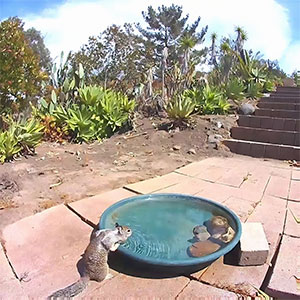“Unveiling the Secrets of the World’s Most Dangerous Island: What Lies Behind the Ban?”
Imagine an island so notorious it earned the dubious title of the “world’s deadliest.” Gruinard Island spent nearly half a century off-limits to the public, painting a picture of mystery and intrigue against the stunning backdrop of the Scottish Highlands. Now, when we think of this remote region, we might conjure images of rugged mountains, chilly lochs, and misty air. But lurking in its history is an unsettling chapter that involves anthrax—yes, the very same bacteria that sends shivers down our spines! So, why was this once innocuous-looking isle deemed too dangerous for human feet? It’s a wild story that mingles science, wartime secrecy, and a touch of grim curiosity. Prepare yourself for an exploration of not just an island’s eerie past, but of a timeline that finally sees it return to the realm of human adventure. Curious? Good, because the details are as jaw-dropping as they are head-scratching! LEARN MORE.
An island once dubbed the ‘world’s deadliest’ was closed to the public for nearly 50 years.
When you think of the Scottish Highlands, images of mountains, freezing temperatures, and deep, mysterious lochs typically comes to mind.
But what about anthrax?

Gruinard Island is located off the Scottish Highlands (Chip HIRES/Gamma-Rapho via Getty Images)
Why was Gruinard Island banned to the public?
Located close to a bay near Gairlock and Ullapool, Gruinard Island appears pretty unimportant at first glance. However, it was once a key World War II test site, which left it contaminated with a deadly virus for nearly five decades.
In 1942, scientists set off anthrax spore bombs as part of ‘Operation Vegetarian’, to test whether or not the bacteria could be weaponised in their offensive against Germany.
The operation saw the military purchase the remote island and ban locals from visiting. Sheep were then used as test subjects for the subsequent anthrax explosion, with all of the livestock ultimately becoming contaminated and dying.
“Eighty-odd sheep were tethered at various stages downwind of the likely explosion,” University of Leeds professor later Edward Spiers explained in the 2022 documentary ‘The Mystery of Anthrax Island’.
“It isn’t a great bang, a draught of highly potent spores moving down on the wind and causing infection and death wherever it goes.”

A sign warning people away from Gruinard Island (Chip HIRES/Gamma-Rapho via Getty Images)
Anthrax spores never ended up being used in weapons. However, enough damage was done to the island, and in 1945, the Ministry of Supply took responsibility of the island and judged it to be ‘too hazardous’.
The research would remain a secret by the UK government until the 1980s when ‘Operation Dark Harvest’ demanded the island be decontaminated, thus bringing the situation into public knowledge. It wouldn’t be until 1997 when the full details came to light, when a declassified military film was released into the public domain.
Has Gruinard Island since been decontaminated?
The actions of the Dark Harvest Commandos saw the UK government try again to decontaminate the island, this time by soaking the island in a mixture of seawater and formaldehyde while the worst affected soil was removed an incinerated.
A flock of sheep would later be placed on the island after the clean-up in 1987, and they remained healthy – leading the government to declare the island anthrax-free and remove warning signs deterring people from visiting in 1990.
In 2022, the entire island would catch fire, with eye-witnesses calling the scene ‘apocalyptic’ and like a ‘hell fire’ at the time.
_.webp)
YouTuber Dara Tah visited the island in 2023 (YouTube/DaraTah)
Has anyone visited Gruinard Island since?
The island would become the subject of renewed curiosity in 2023, when YouTuber Dara Tah decided to stay overnight on Gruinard and remove some of the soil for anthrax testing.
Despite the island’s contamination-free status, Tah and friend Matt James donned hazmat suits for the video to be on the safe side.
Fortunately, the samples the pair took from the island came back anthrax-free, which means its safe to visit – if you want to.













